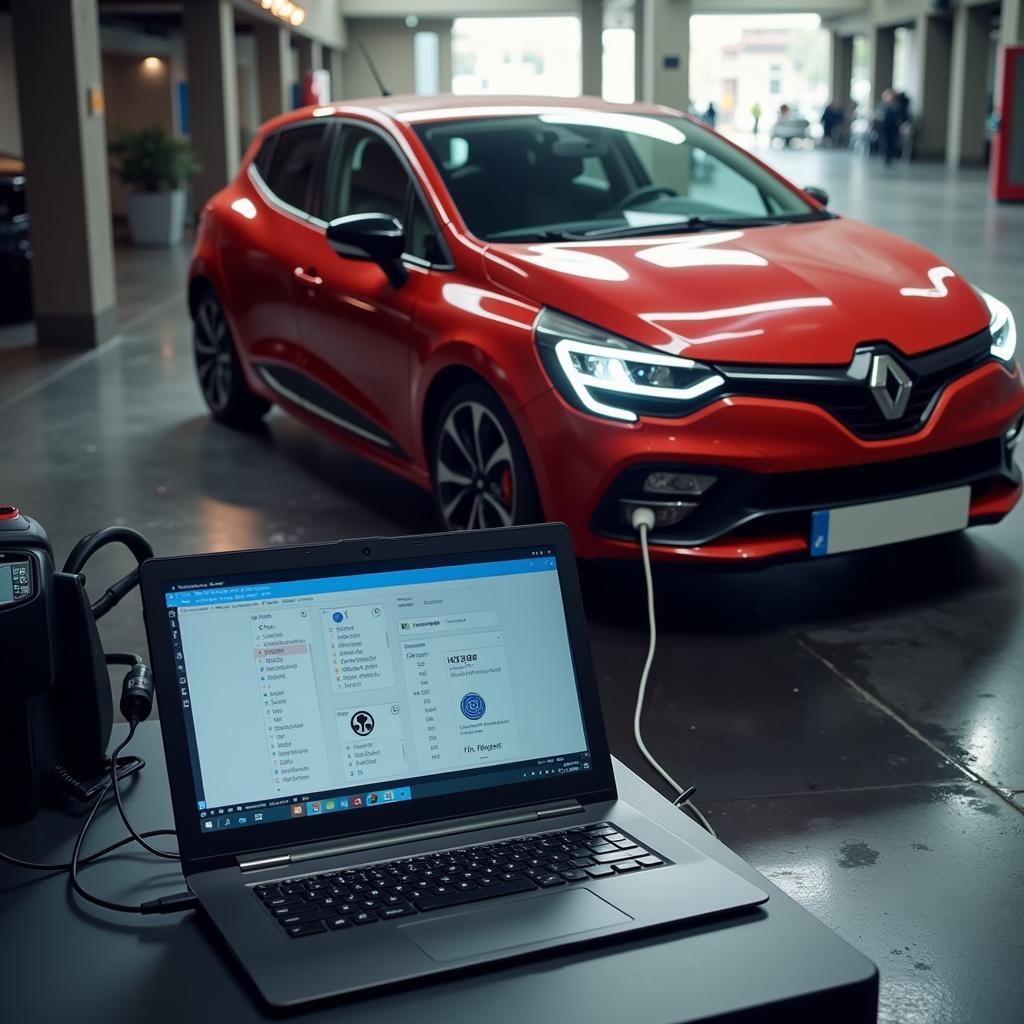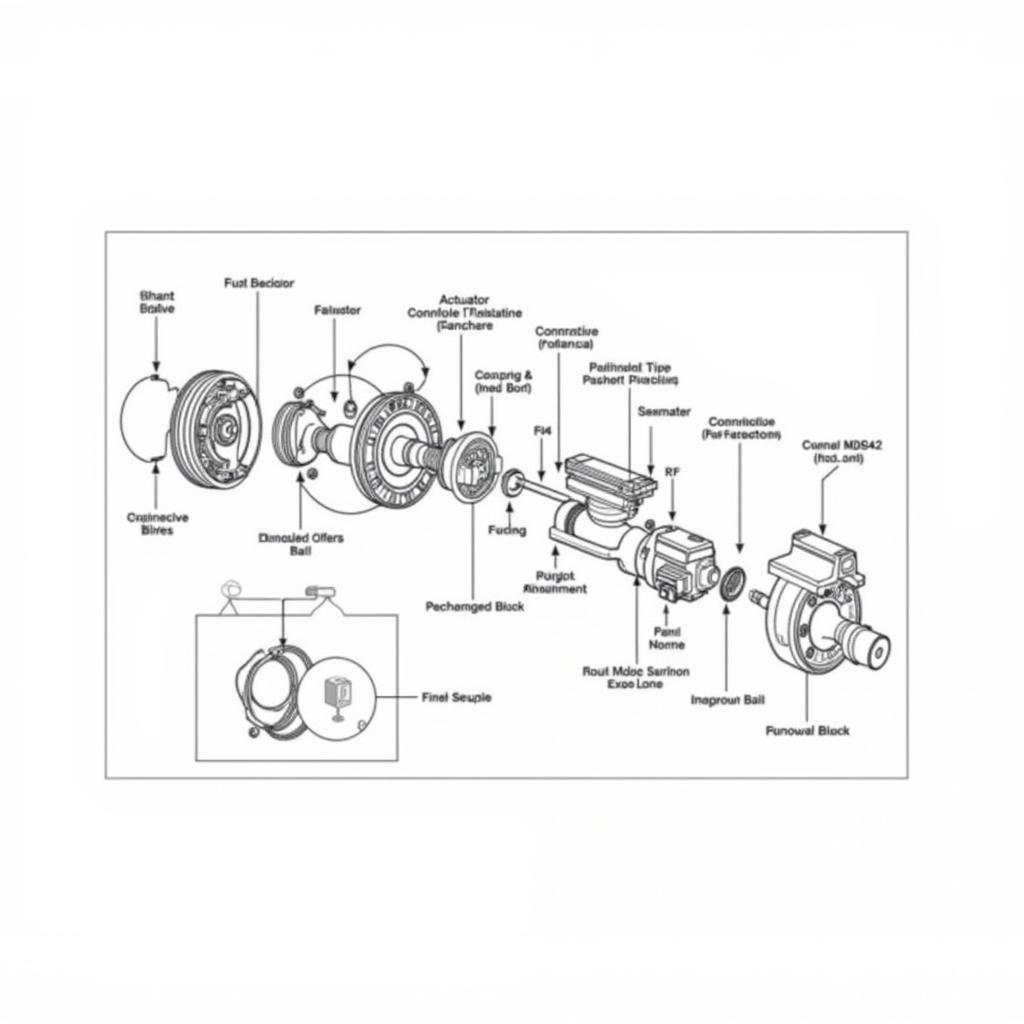The dreaded renault clio brake pads warning light has illuminated on your dashboard. What does it mean and what should you do? This comprehensive guide will walk you through understanding, diagnosing, and resolving the issues surrounding your Renault Clio’s brake pad warning light.
renault clio brake pads warning light
Understanding the Brake Pad Warning Light
The brake pad warning light is a crucial safety feature in your Renault Clio. It alerts you when your brake pads have worn down to a point where they need replacing. Ignoring this warning can lead to decreased braking performance, potential damage to your brake rotors, and ultimately, a compromised safety situation.
Why is My Renault Clio Brake Pads Warning Light On?
There are several reasons why your Renault Clio brake pads warning light might be illuminated. The most common culprit is, of course, worn brake pads. However, other issues can trigger the warning light, including a faulty brake pad wear sensor, damaged wiring, or even low brake fluid.
Worn Brake Pads
Brake pads are designed to wear down over time. As you apply the brakes, friction between the pads and the rotors generates the stopping power you need. This friction gradually wears away the friction material on the pads. When the pads wear down to a certain thickness, a sensor triggers the warning light.
Faulty Brake Pad Wear Sensor
The brake pad wear sensor is a small wire embedded in the brake pad material. When the pad wears down to a critical level, the sensor makes contact with the rotor, completing a circuit and illuminating the warning light. However, sometimes the sensor itself can malfunction, triggering the light prematurely.
Damaged Wiring
The wiring that connects the brake pad wear sensor to the warning light can become damaged due to wear and tear, corrosion, or even rodent activity. A break in the wiring can interrupt the circuit, preventing the warning light from functioning correctly.
Low Brake Fluid
While not directly related to the brake pads, low brake fluid can also trigger the warning light. This is because low brake fluid can indicate a leak in the braking system, which is a serious safety concern.
Diagnosing the Problem
Diagnosing the cause of your illuminated brake pads warning light typically starts with a visual inspection of the brake pads. If the pads appear thin or worn, replacement is likely necessary. If the pads look fine, further investigation is required, potentially involving checking the brake pad wear sensor, wiring, and brake fluid level.
Checking the Brake Pads
To check your brake pads, you’ll need to remove the wheel. Once the wheel is off, you can visually inspect the brake pads through the caliper. Look for the thickness of the friction material. If it’s less than a few millimeters, it’s time for new pads.
Checking the Brake Pad Wear Sensor
The brake pad wear sensor is a small wire that extends from the brake pad. You can check the sensor by visually inspecting it for damage or breaks. You can also use a multimeter to test the continuity of the sensor circuit.
Checking the Wiring
Inspect the wiring harness that connects the brake pad wear sensor to the vehicle’s electrical system. Look for any signs of damage, such as fraying, cuts, or corrosion.
Checking the Brake Fluid Level
Locate the brake fluid reservoir in your engine compartment. The reservoir is usually a translucent plastic container with minimum and maximum markings. Check the fluid level and top it off if necessary. If the fluid level is consistently low, it could indicate a leak in the braking system.
What to Do if Your Renault Clio Brake Pads Warning Light is On
If your renault clio brake pads warning light is on, the safest course of action is to have your vehicle inspected by a qualified mechanic. They can diagnose the problem accurately and perform the necessary repairs.
Remote Diagnostics and Software Solutions
In some cases, remote diagnostics and software solutions can be used to identify the cause of the warning light. This can be a convenient and cost-effective way to address the issue, especially if the problem is related to software or sensors. However, physical inspection and repairs are often still necessary.
“Regular brake maintenance, including checking your brake pads, can prevent many issues and ensure your safety on the road,” says John Miller, Senior Automotive Technician at CarDiagTech.
 Remote Diagnostics on a Renault Clio
Remote Diagnostics on a Renault Clio
Conclusion
The renault clio brake pads warning light is an important safety feature. Understanding its meaning and taking appropriate action can help you maintain your vehicle’s braking system and ensure your safety on the road. If you’re unsure about any aspect of diagnosing or repairing your brakes, consult a qualified mechanic.
FAQ
-
How often should I check my brake pads? It’s recommended to have your brake pads checked every 12,000 miles or as part of your regular vehicle maintenance.
-
Can I drive with the brake pad warning light on? While you might be able to drive a short distance, it’s not recommended. Driving with worn brake pads can damage your rotors and compromise your safety.
-
How much does it cost to replace brake pads on a Renault Clio? The cost can vary depending on the specific model year and where you have the work done, but it typically ranges between $100 and $300.
-
What are the symptoms of worn brake pads? Common symptoms include squealing or grinding noises when braking, a spongy brake pedal, and a vibrating steering wheel.
-
How can I prevent my brake pads from wearing out prematurely? Avoid hard braking whenever possible, and ensure your brake calipers are functioning correctly.
-
Can I replace my brake pads myself? If you have mechanical experience, you might be able to. However, it’s generally recommended to have a qualified mechanic perform the work.
-
What is the difference between brake pads and brake rotors? Brake pads are the friction material that clamps down on the brake rotors to stop the vehicle. Brake rotors are the metal discs that the brake pads grip.
“Remember, maintaining your brakes is an investment in your safety,” adds Sarah Davis, Lead Diagnostic Specialist at CarDiagTech.


